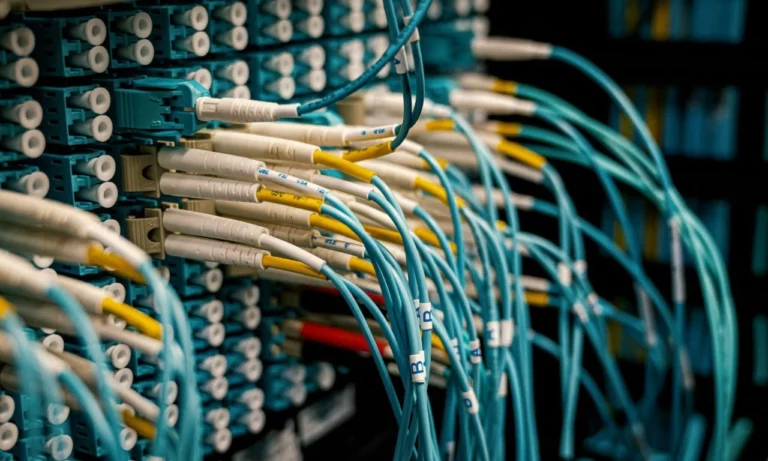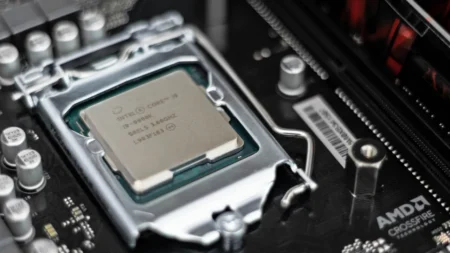Optical fiber has revolutionized high-speed data transfer as it is used in cables transferring data by light signals. Optical fiber has many benefits over more common copper wiring. This article is intended to take you through the working, advantages, and applications of optical fiber, and explains how this fact has been instrumental in creating modern high-speed methods of data transfer.
How the Optical Fiber Cable Works
In optical fibers, data is transmitted on the operational principle with the help of light signals. It is this light that moves within a small, flexible fiber made with glass or plastic. This fact is based on the principle of total internal reflection, through which rays of light continue to bounce off the inner walls of a fiber. This enables light to travel over long distances with little loss in signal quality.
There are two types of optical fiber cables: single-mode and multi-mode. The single mode has a core diameter extremely small in size, which in turn disperses the light signal very little and allows data transfer over long lengths. On the other hand, multi-mode fibers allow the carrying of several light signals by having a larger core diameter than those in single-mode fibers. However, due to increased dispersion, the multi-mode fibers have been limited to short distances.
The Benefits of Optical Fiber Cable
There are a few good benefits to using optical fiber cables rather than the more conventional copper lines.
- High Bandwidth: One of the most outstanding benefits is their high bandwidth capacity. Optical fibers can be able to transfer large volumes of data at high speeds, making the entire process fast.
- Immunity to Electromagnetic Interference: Optical fibers are immune to electromagnetic interference. Therefore, they are a reliable means of data transmission, especially when a lot of electrical noise is expected to be encountered.
- Lightweight and Flexible: These cables are highly flexible, in addition to being lightweight, to minimize the cost of installation.
In fact, optical fiber lines are critical to the functioning of telecommunication, high-speed Internet, and even medical imaging. The technology is being modified day by day, with researchers putting efforts into finding ways to make data transfers faster and, at the same time, cheaper.
The Future of High-Speed Data Transfer
At the moment, the developments in technology have been headed towards faster and more efficient transmission of information across great lengths. Indeed, the future is with optical fiber cables, which have revolutionized the world of telecommunications. Since these cables use light to transfer data, they are supposed to have much higher bandwidth compared to conventional copper cables.
It affects the telecommunications industry by allowing fast internet speeds, better voice quality in phone calls, and clearer video streaming. Besides, the optical fibers can transmit data over longer distances without loss or degradation in signal quality.
However, though it is potential, there exist challenges and limitations to be surmounted, including the cost of installations and maintenance including fiber networks and special equipment, as well as skilled technicians for installations and repairs. Nevertheless, the future appears to be very promising for data transfer at a quicker pace by means of these optical fiber cables.
Applications and Uses of Optical Fiber Cable
The potentials of using optical fiber technology go far beyond telecommunication:
- Healthcare: Optical fiber cables enable rapid, reliable, and secure data transfer within medical imaging applications, such as endoscopy and ultrasound. This allows for instant diagnosis, monitoring, and follow-up.
- Telecommunications: These cables provide a robust backbone that enables information to be transferred at incredible speeds, connecting different parts of the globe.
Advancements and Innovations in Optical Fiber Technology
Researchers in the optical fibers field are looking for newer techniques to optimize the technology and ways to broaden the scope of its use. The feature of multicore fibers is an exciting breakthrough because there are many cores along one strand of fiber. This way, sending multiple data streams in one go would be feasible, and not one after another. It can literally mean doing wonders for cloud computing and making streaming 4K videos easier.
But there is still a lot of work to do. The first hurdle is to find out how to do battle with signal loss over those long distances. The last thing you want is your high-speed Internet turning into a tortoise just because you’re far from the source. The second issue is learning to make the new generation of fibers play nice with the stuff already out there.
Discover more from Technical Master - Gadgets Reviews, Guides and Gaming News
Subscribe to get the latest posts sent to your email.








